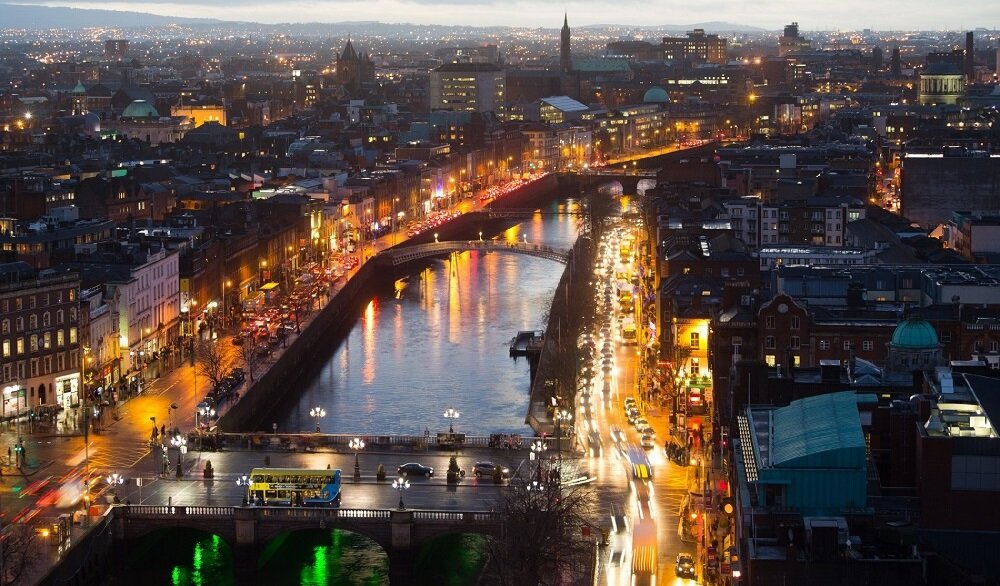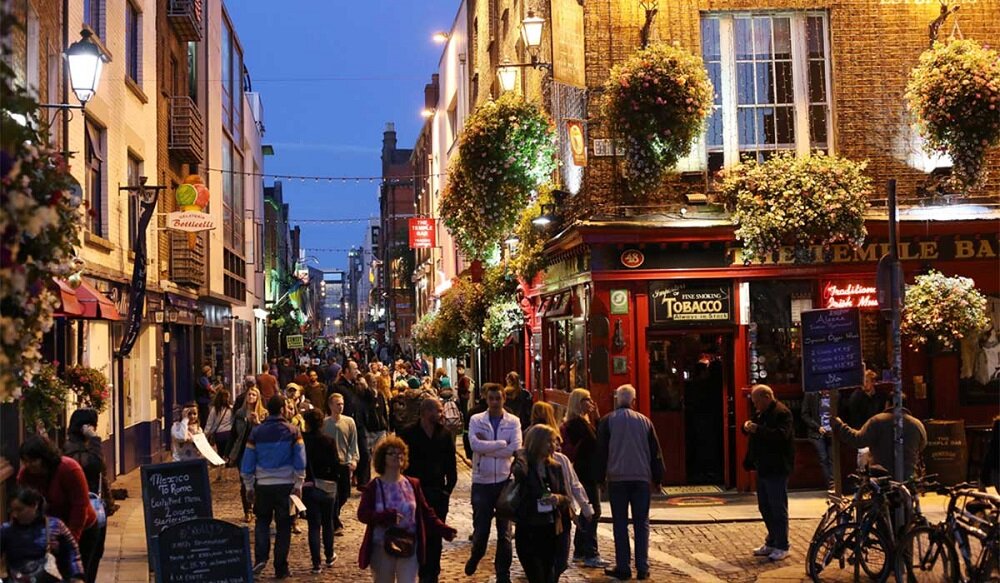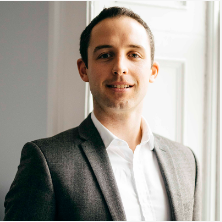By
PADDY O’DEA

We are now in the second week of the 25th annual Fringe Festival. Over the course of the 16-day celebration of arts and culture, punters from across Ireland will descend on 36 venues across the city—including a DART carriage, a Gothic chapel, a hairdresser’s on Wicklow Street, and the National Boxing Stadium—to take in 80 different productions and 545 performances.
In a city that trades so heavily in its literary heroes of yore, the Fringe plays a pivotal role in nurturing and supporting the next generation of local creative talent. It’s also very affordable. In short, the Fringe is Dublin culture and Dublin nightlife at their collective pinnacle.
But this year’s Fringe comes at a curious time, when the survival of some of Dublin’s most-loved cultural and night-time institutions has never looked so precarious.
Just last week, we learnt of the imminent closure of the iconic Bernard Shaw pub on Richmond Street. The news has proved so shocking to some that a group of city councillors has requested a special meeting to discuss the new “cultural crisis” in Dublin.
High-profile shutterings, combined with a consistent churn of planning permissions for new hotels, have given rise to a narrative of a city losing its identity to rampant tourism and hospitality development.
One mooted solution to safeguard and promote Dublin’s night-time culture is the creation of the ‘Office of the Night Mayor’. The rationale is that a vibrant, wide-reaching night-time culture, shaped and steered by a dedicated mayor and office, will embolden a thriving creative scene, and deliver greater social cohesion, safer streets, more footfall, increased tax receipts, and less crime.
This idea has gained considerable momentum in recent months and years. In 2017, Dublin City Council sent representatives to the international Night Mayor Summit in Amsterdam; as recently as June, Dublin’s newly elected city councillors pledged their support for the position in their ‘Dublin City Agreement 2019 – 2024’ paper. It now appears to be a case of ‘when’ rather than ‘if’.
Framing a new narrative
Cities are constantly evolving, and Dublin is no different. This evolution has inevitably thrown up both welcome progress and fresh challenges.
The establishment of the Office of the Night Mayor has the potential to create a new discourse about what Dublin represents and help articulate the next chapter of its story. It is an opportunity to redress citizens’ growing perception that Dublin is overlooking its own people and squeezing out its most beloved cultural institutions.
This will not be without its challenges.
If the Office of the Night Mayor is created, we need to begin by asking ourselves what we want from our night-time economy and how the creation of this office will help us realise our vision.
This requires widespread consultation with a very diverse group of stakeholders spanning the creative community, resident groups, the hospitality sector, and frontline service providers, among others.
Our vision needs to encompass something greater than just replicating London and Berlin in Ireland. Dublin is a different proposition and so are its inhabitants.
The new night mayor will need the vision and charisma to meld the many disparate Dublins—Viking Dublin, Joycean Dublin, seaside Dublin, Liberties Dublin, Silicon Docks Dublin, Friday-night-lights-in-Dalymount-Park Dublin, District 8 Dublin, and all the iterations in between—into a single overarching Dublin narrative that captures the imagination of locals and challenges the lingering ‘Temple Bar-centric’ perception of its visitors.

An all-inclusive vision
Historically, policymakers and the political establishment have viewed nightlife with suspicion, as something to be controlled and regulated. In order to address this wariness, the night mayor will need to educate those controlling the purse strings on the tangible benefits of a vibrant after-hours culture.
This starts with analysing the data. More specifically, before rolling out any grandiose proclamations for Dublin’s reimagined midnight economy, we must first understand how Dubliners use their city between 6pm and 6am.
This means undertaking a body of research to analyse who is at work in the evenings, how Dubliners get around their city, when and where they exercise, where and how they socialise, and how safe they feel after dark, among other considerations. The findings would then inform a data-driven roadmap that reflects the needs and aspirations of the city’s inhabitants and workers.
Informed by this insight, the Office can develop a strategy that is anchored in tangibly stimulating the economic, voluntary, and social night-time services of the city, and supported by a creative rollout plan that mobilises the desired response.
Thereafter, the Office needs to detail, on an annualised basis, a series of metrics that demonstrate the evolving nature of Dublin’s night-time economy, including pedestrian footfall, free entertainment, high street spending, alcohol consumption, and after-dark crime stats. It is an opportunity to examine and communicate what is working well and what can be done differently. It should also demonstrate the causal effect between greater nightlife engagement and a safer, more innovative city.
The new night mayor
To create a vibrant Dublin nightlife, the Office needs someone with real leadership qualities to take the helm.
This person needs to be politically savvy, with the skills to advance change, bring people on the journey, and win the big budgetary and policy decisions. They will have to deal with a very disparate stakeholder group and a share of cynics.
A celebrity or ambassadorial appointment with a soft spot for a photocall is not the answer. The night mayor will need to want responsibility as well as power.
Like any campaign or public initiative, consultation and public buy-in are key. If the Office becomes a token gesture to appease the creatives, people will see through it very quickly. Equally, if it is not properly resourced and articulated, it will be viewed as a failed attempt to keep pace with other European capitals.
A strong, committed and well-resourced leader will be the glue that binds the Office’s objectives and credibility together. They will help the public, and stakeholders in the halls of capital and national power, to truly value and engage with Dublin’s night-time culture and infrastructure.
Without a leader’s ability to inspire and rally support, Dublin City Council could waste millions of euros on an initiative that completely fails to resonate with the public—and that means the justifiably dark clouds of disillusionment and disconnectedness will continue to grow.
PADDY O’DEA
Paddy is a Client Director at PR360. He helps clients create engaging corporate stories, cut through the noise, and advance their business objectives. He is most happy when buried under a pile of newsprint.

